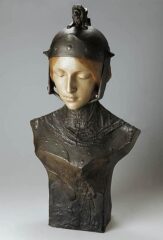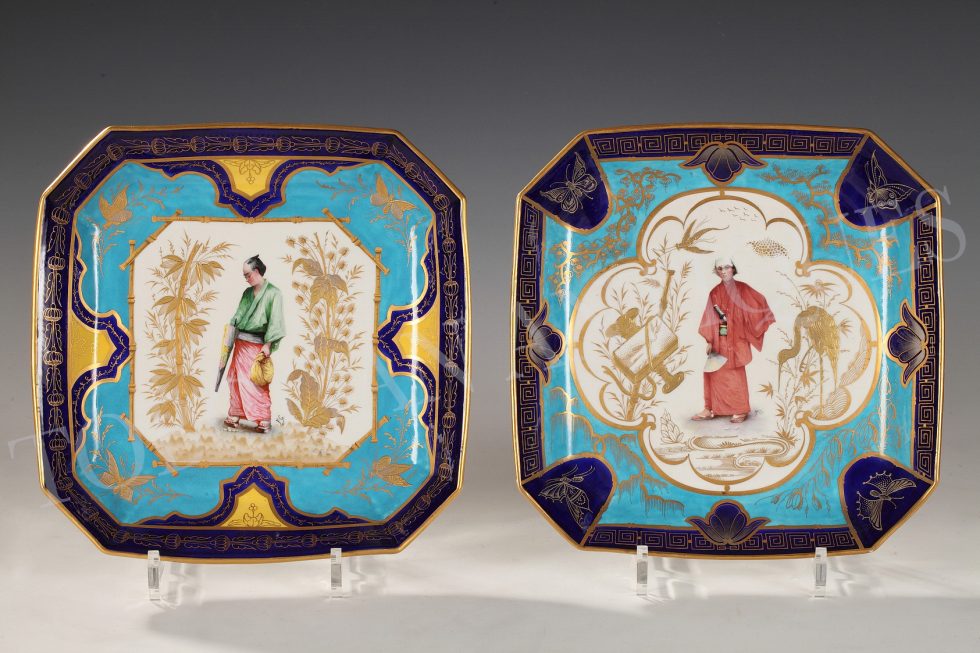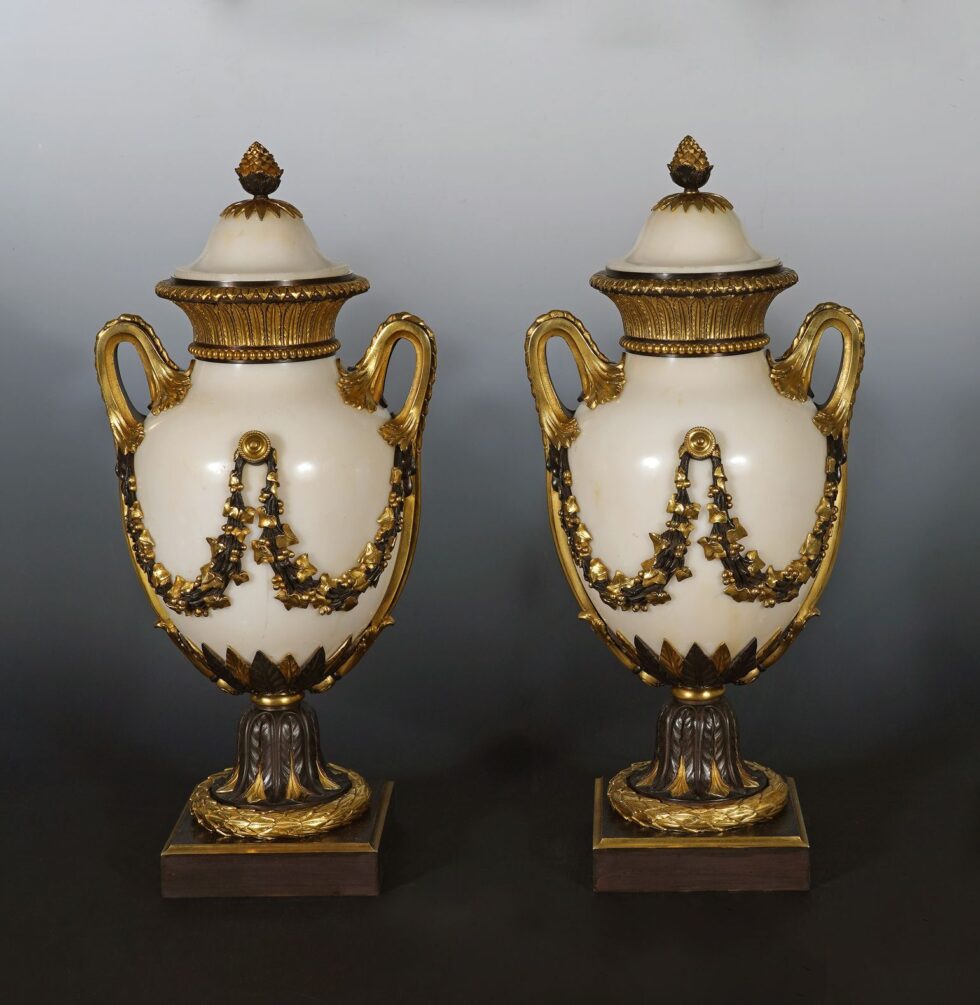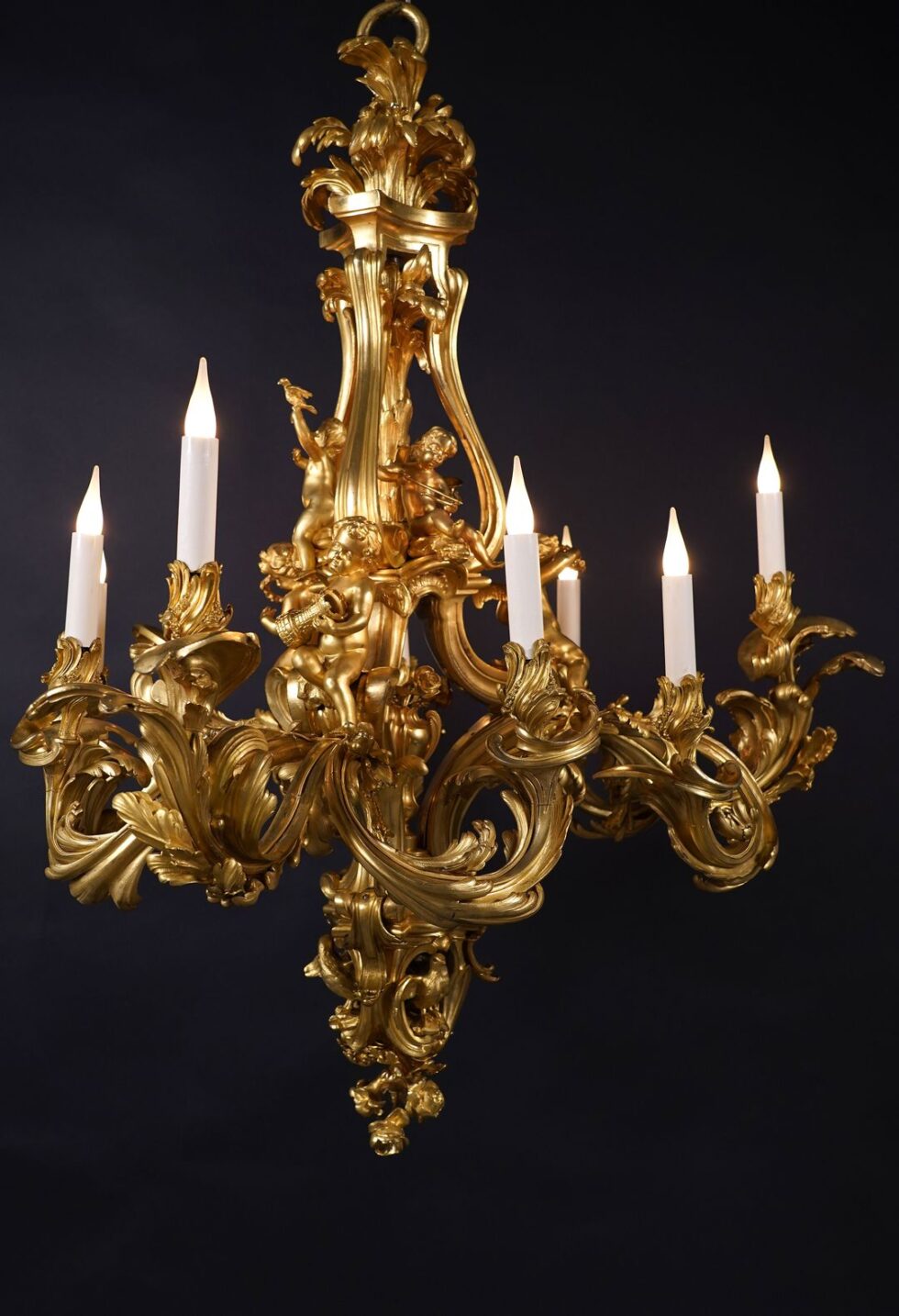ref. 1825
E. Ceccarelli
Sculptor
(1865-1927)
« Giuditta »
Italy
Circa 1900
Signed Prof. E.Ceccarelli
Bear the seal « Galeria Artistica-Perù 134- S.C Reguan »
Patinated Bronze, Carrara Marble with Gilded Highlights
Height of the statue: 166 cm (65,35 in.); Width : 85 cm (33, 46); Depth : 57 cm (22,44 in.); Height with the base: 258 cm (101,5 in.);
Great female statue of Judith in bronze with brown patina and white marble from Carrara. This young woman holds in her hands, stretched over his head, a scimitar in its scabbard, ready to draw it. The weapon is fitted with a hilt decorated by a stylized lion on the top of the sword guard, adorned with an Egyptian scarab with outstretched wings. The face, in white marble, with gentle characteristics and half-closed eyes looked down at the viewer, is topped with two braids meeting at the back of the head, the whole encircled by a headband adorned with golden piastres. The liberator, slightly swaying, is dressed in a loose-fitting bronze tunic and antique-style drapery, embellished with a belt adorned by a beetle with outstretched wings. The bottom of the tunic is decorated with stylized vegetal motifs, revealing her sandals.
The sculpture rests on a base of Verona red marble, the whole set on a fluted column of Florence serpentine with a rectangular top and molded circular base.
Although any male figure is associated with it to our knowledge, the theme of this symbolist sculpture is Judith and Holofernes. Indeed, Judith, a young widow of extraordinary beauty, wanting to save her city besieged by the Assyrian general, decides to behead him after having charmed and intoxicated him. The figure of Judith, which in our sculpture combines several stylistic elements from the Mediterranean basin such as an Egyptian scarab, an Ottoman scimitar, a Caucasian headband and a Greek-inspired tunic, is sculpted before the general’s death, in an attitude of contemplation. This evocation stimulates our imagination, inviting us to take a journey through civilizations.
Working mainly in marble, Ezio Ceccarelli also experimented into bronze and other materials, as in our sculpture “Giuditta” circa 1900 and this helmeted female head, circa 1905. This latter depicted half-closed eyes in an interiorized attitude, giving great delicacy and fullness to the idealized face, a principle also present in the Ecce Homo bust of 1899.
This infatuation with polychrome sculptures and the mixing of materials can be linked to the research carried out in France by the sculptor Louis-Ernest Barrias (1841-1905), whose famous “La Nature se dévoilant” of 1899 is now in the Musée d’Orsay, in a bid to revive archaeological discoveries on the polychromy of ancient Greek sculptures, or to rival their chryselephantine sculpture in aesthetic terms.
Related works
Woman Bust, E. Ceccarelli, circa 1905, private collection
Biography
Ezio Ceccarelli (1865-1927), born in Montecatini Val di Cecina, was an Italian sculptor who has begun his apprenticeship at the Academy of Rivalta and Bortone in Florence, a city he particularly loved, later becoming a teacher himself at the Industrial Art School in Volterra. In addition to his teaching activities, he founded a sculpture studio in Florence, welcoming both students and collaborators. Thanks to this workshop and the resulting recognition, he took part in numerous competitions, including the statue of King Carlo Alberto in Rome, winning the first Curlendese prize in Bologna in 1899 and, above all, the gold medal for his statue Ecce Homo in the Gregorian competition in Rome. His virtuosity and renown spread far and wide, thanks to his participation in numerous international competitions, including those in Liège, Copenhagen and Athens. He represented Italy at the Exposition Universelle in Paris, an experience he repeated in 1904.
Building on this success, he sculpted or designed several civil sculptures for Italian cities, including a Garibaldi for Massa in 1905, a Carlo Montanari for Verona and a Christopher Columbus for La Plata in South America.
Museography
In December 2004, the exhibition “Two sculptors and a monument” was held at Massa’s Palazzo Ducale, dedicated to the restoration of Massa’s monument to Garibaldi, modeled by Ezio Ceccarelli and executed in 1906 by Fernando Tombesi in Massa’s famous Cuturi workshop.
In addition to his public statues, a sculpture entitled “The Angel of Death” is kept at the Uffizi Gallery.
Bibliography
A.Panzetta, Dizionari Degli Scultori Italiani Dell’Ottocentento, Torino, ed. Umberto Allemandi, 1994.
Contact us
Tobogan Newsletter
If you want to be up-to-date with our new acquirings you can sign up to our newsletter.












